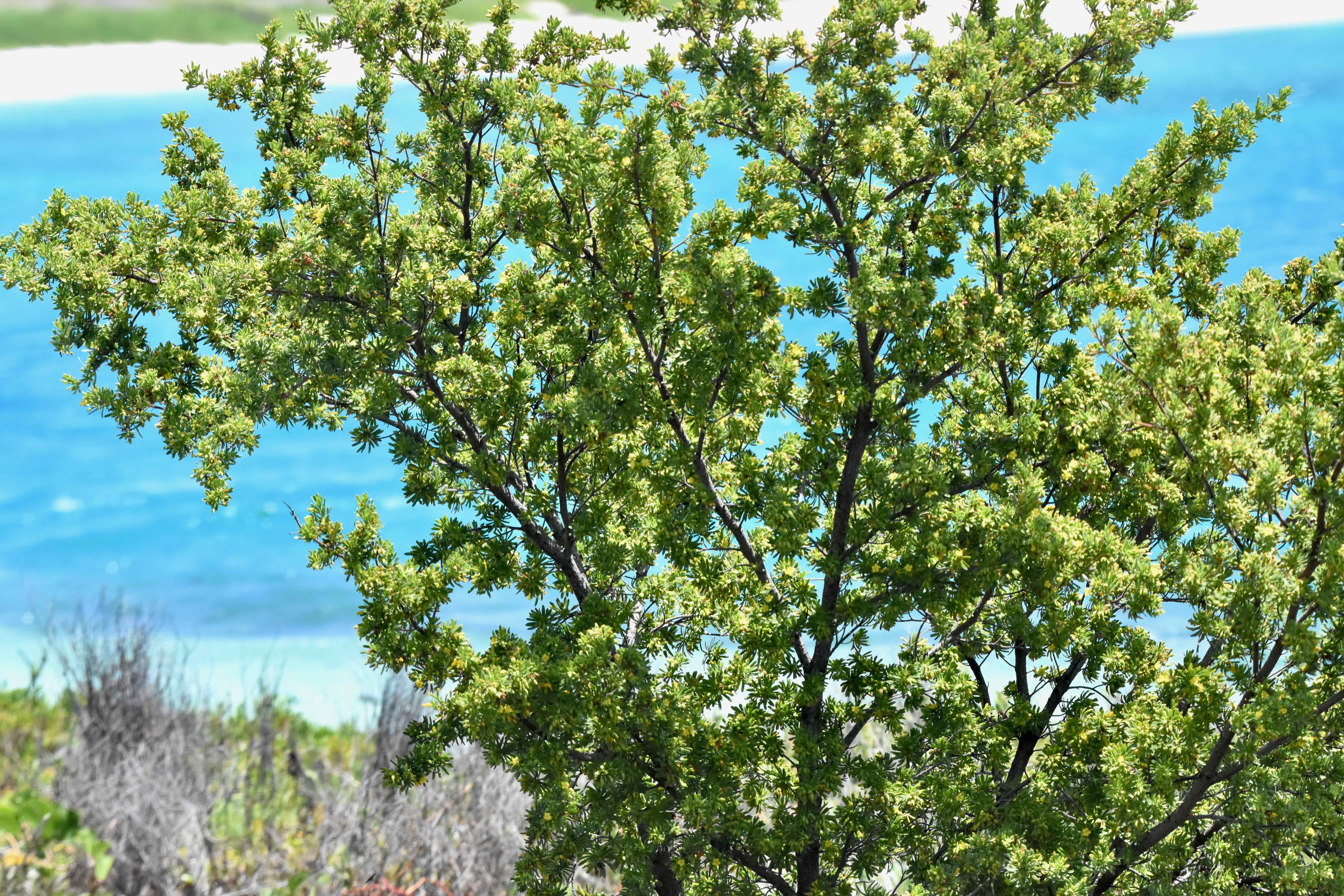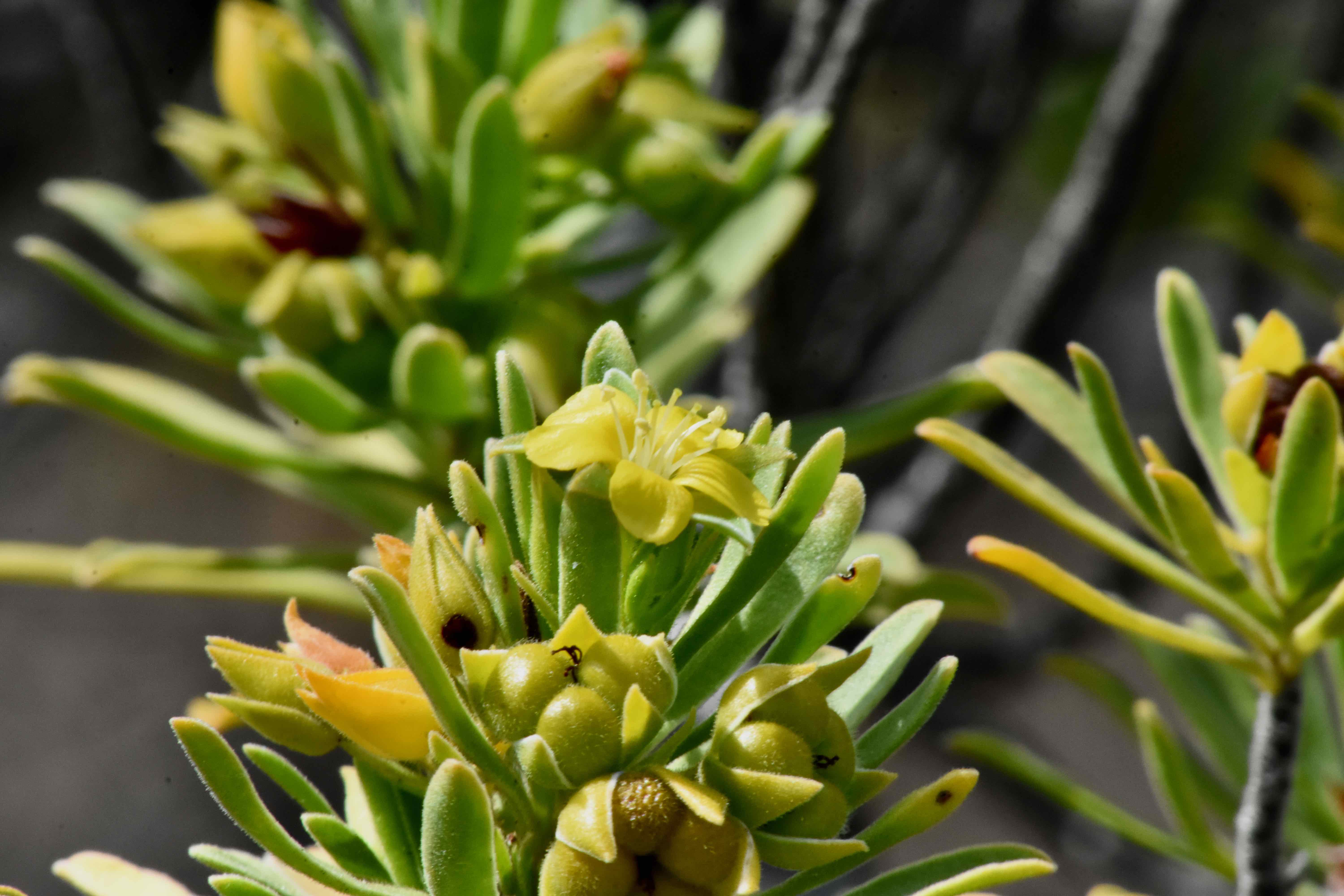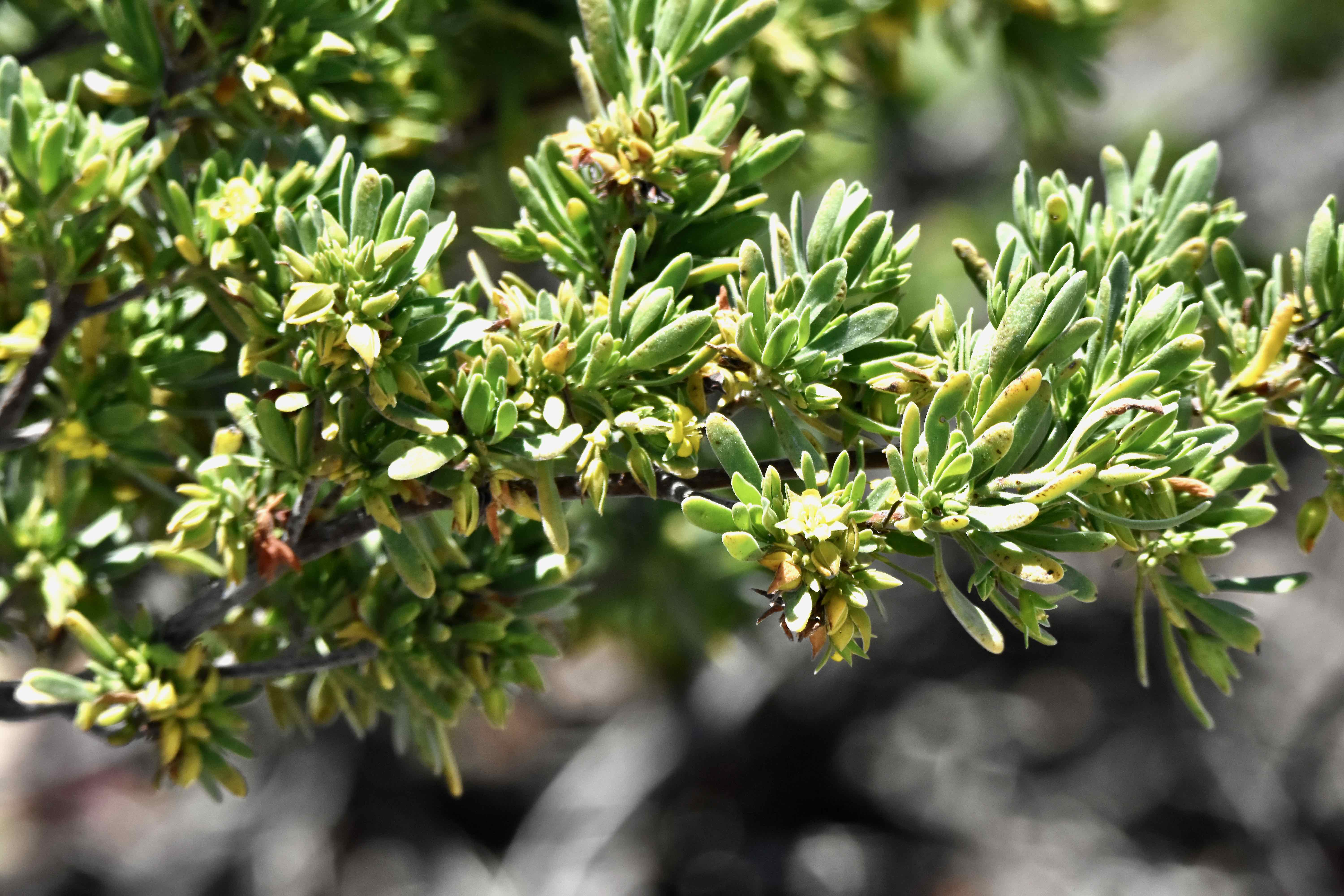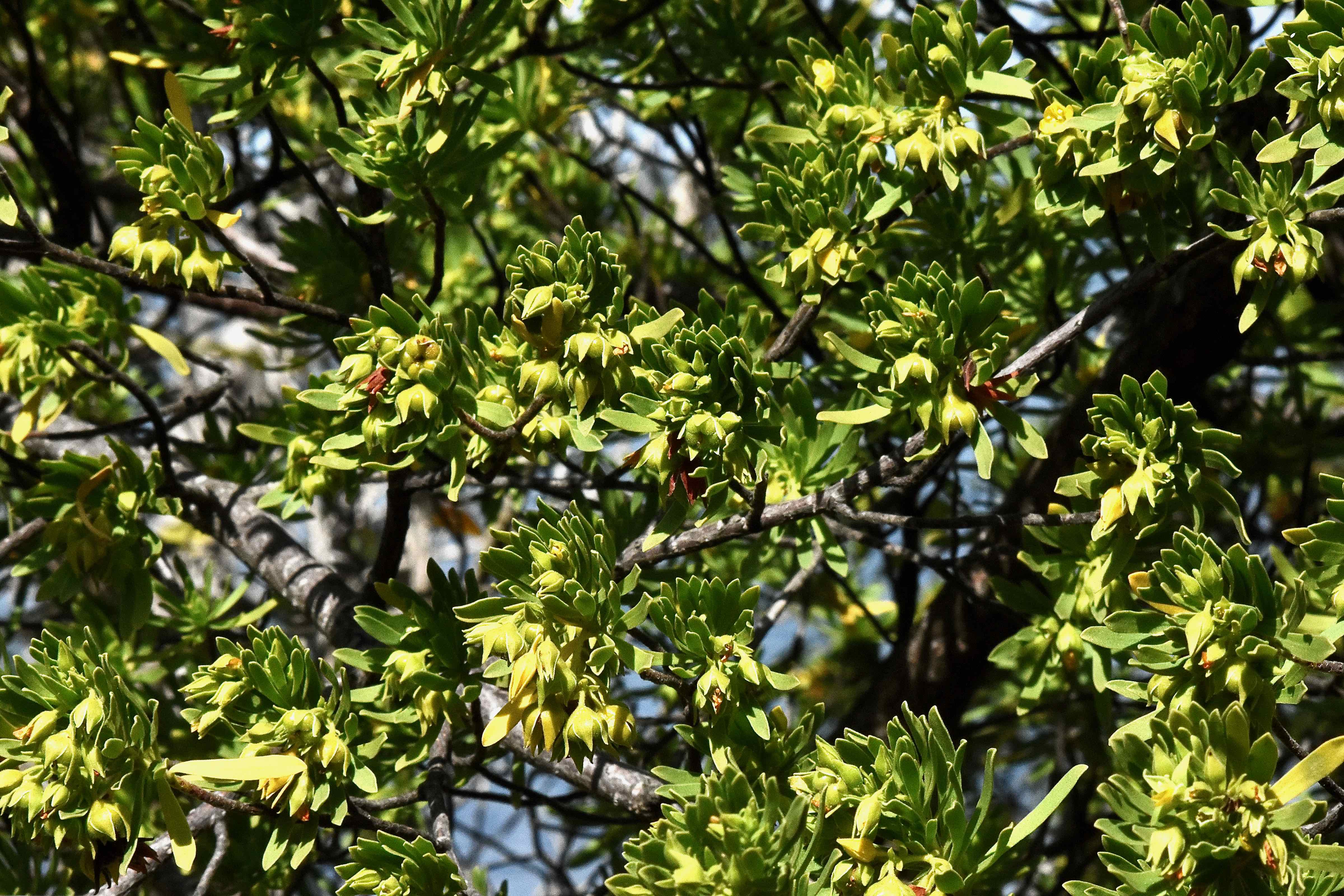
Bay cedar, photographed at Bush Key, Dry Tortugas National Park, Monroe County, in April 2017.
This Florida native is a world traveler thanks to a seed that floats and a habitat that puts it close to the water. Bay cedar, Suriana maritima, can be found along both Florida coasts, through the Caribbean, Central America, South America, Africa, Asia, on islands in the Indian and Pacific oceans and Australia.
Almost any tropical place near the water, bay cedar is there. And where it's not found in the wild, it's often used as an ornamental. Bay cedar gets its name from its aromatic leaves — crush one and it smells like the real thing. Put one in your mouth and you get a salty taste. The leaves are also thick and covered with down-like hairs
Bay cedar is a shrub or small tree that grows between five and 20 feet high, with small, yellow flowers and dense branches and foliage. The flowers produce a small, brown fruit with seeds that, as noted earlier, are buoyant in salt water while remaining viable for long periods. That combinations allows it to cross oceans and find new homes in distant lands. It's found in coastal dunes and scrubs, from the high tide mark inland. Both the flowers and the fruit appear on bay ceder intermittently throughout the year.
The U.S. Department of Agriculture says bay cedar can be rare or uncommon in parts of its habitat and form thickets in others. The University of Florida says bay cedar is listed as endangered, but, according to the Institute for Regional Conservation, bay cedar is secure within South Florida.
The USDA says bay cedar is an ideal plant for coastal landscapes but underused as such.
It is the sole member of its genus, and apparently the only member of its family, Surianaceae, native to North America.
The plant serves as host for the larva of two butterflies, the martial scrub-hairstreak and the mallow scrub-hairstreak. The flowers attract martial scrub-hairstreaks, julia, great southern whites, obscure skippers and other butterflies. Birds eat the fruit. Bay cedar is used by some to treat rheumatism and skin ulcers and to stop bleeding. In the Bahamas, it's used a remedy for itchy skin, stomach problems, to ease sore throats and toothaches, and to make strengthening teas. In other parts of the Caribbean, it's used for blood disorders and to treat fevers.
Other names, which reflect how widespread bay cedar really is, include: tassel-plant, guitarán, temporana, jovero, cuabilla, pantsil, cucharo, palo corra, oseille bord de mer, romarin noir, and crises marine. Other spellings: baycedar and bay-cedar.
Dry Tortugas National Park



